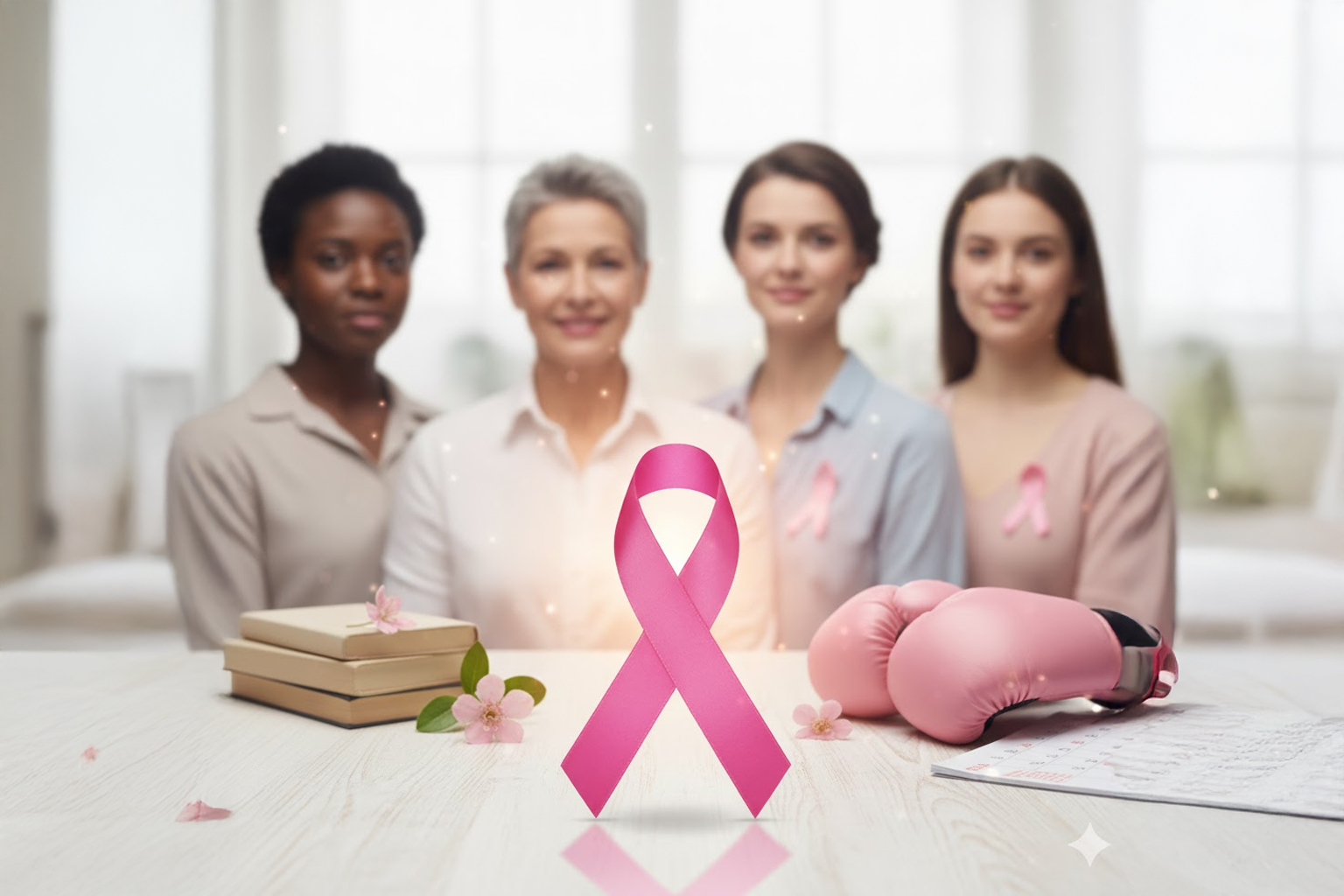Breast cancer is one of the most common and life-altering diseases affecting women across the globe. Despite the widespread impact, many people still lack essential knowledge about its causes, symptoms, and prevention.
This comprehensive guide aims to raise breast cancer awareness, highlight the importance of breast cancer prevention, and emphasize the power of breast cancer education in saving lives.
What is Breast Cancer?
Breast cancer is a type of cancer that begins when cells in the breast start growing uncontrollably, forming a tumor. It can occur in both women and men, though it is far more common in women.
According to the World Health Organization (WHO), breast cancer is the most frequently diagnosed cancer among women worldwide. The good news is that early detection and timely treatment greatly improve survival rates — which is why awareness and education are so critical.
The Importance of Breast Cancer Awareness
Why Does Breast Cancer Awareness Matter?
Awareness saves lives. The more people understand about breast cancer, the more likely they are to take preventive action and seek medical advice early.
Raising awareness helps:
- Encourage regular screenings and self-examinations
- Promote early detection — which improves treatment outcomes
- Educate communities about risk factors and symptoms
- Support those currently battling the disease through shared knowledge and compassion
Breast Cancer Awareness Month
Every October, the world unites to observe Breast Cancer Awareness Month. This global campaign aims to:
- Increase understanding of the disease
- Encourage women to schedule mammograms and check-ups
- Raise funds for research, treatment, and patient support
- Honor survivors and remember those lost to breast cancer
During this month, landmarks, organizations, and individuals around the world wear pink ribbons — the international symbol of breast cancer awareness.
Breast Cancer Prevention: Reducing Risk Factors
While the exact causes of breast cancer are still not fully understood, researchers have identified several risk factors that may increase the likelihood of developing the disease. Some of these factors, like age or genetics, can’t be changed — but others are within your control.
Healthy Lifestyle Choices
Adopting a healthy lifestyle can significantly lower your risk. Here’s what helps:
- Maintain a healthy weight: Obesity, especially after menopause, increases the risk of breast cancer.
- Stay physically active: Aim for at least 150 minutes of moderate exercise per week.
- Eat a balanced diet: Focus on fruits, vegetables, lean proteins, and whole grains.
- Limit alcohol: Even moderate drinking can raise breast cancer risk.
- Don’t smoke: Smoking is linked to many types of cancer, including breast cancer.
While no lifestyle plan guarantees prevention, these habits can help reduce risk and improve overall health.
Breast Cancer Education: Knowledge is Power
Education is one of the most powerful tools in the fight against breast cancer. Understanding the disease empowers individuals to take preventive measures, recognize symptoms, and seek care early.
Self-Examinations and Screenings
Early detection remains the best defense. Here’s how you can stay proactive:
- Perform monthly self-examinations: Get to know how your breasts normally look and feel. This helps you detect changes early.
- Schedule regular mammograms: Recommended starting at age 40 (or earlier if you have a family history).
- Visit your doctor: If you notice any lumps, pain, or changes, schedule an appointment right away.
Education ensures that women and men alike can identify the warning signs and understand the importance of timely medical evaluation.
FAQs
1. What are the symptoms of breast cancer?
Breast cancer symptoms can vary widely. Common signs include:
- A lump or thickening in the breast or underarm
- Changes in breast size, shape, or skin texture
- Nipple inversion or unusual discharge
- Redness, swelling, or scaling of the skin
Many breast cancers show no symptoms in early stages — which is why regular screenings are vital.
2. Who is at risk of getting breast cancer?
While anyone can develop breast cancer, risk factors include:
- Being female
- Increasing age
- Family history or inherited gene mutations (BRCA1, BRCA2)
- Radiation exposure
- Hormonal therapy or prolonged hormone exposure
- Lifestyle factors like smoking, alcohol use, and inactivity
3. Can men get breast cancer?
Yes. Although rare, men can develop breast cancer, typically between the ages of 60 and 70. Awareness among men is just as important since delayed diagnosis often leads to more advanced disease.
Conclusion
Breast cancer awareness, prevention, and education are key pillars in the global effort to fight this disease. The more we learn and share, the better our chances of detecting cancer early — and saving lives.
Take Action Today
- Schedule regular breast screenings and mammograms
- Learn how to perform a self-examination
- Share this information to raise awareness within your community
Together, we can empower others with knowledge, encourage early detection, and fight breast cancer more effectively. If you found this blog helpful, share it with your friends, family, and community. Let’s keep the conversation going and continue spreading breast cancer awareness — because knowledge truly saves lives.





